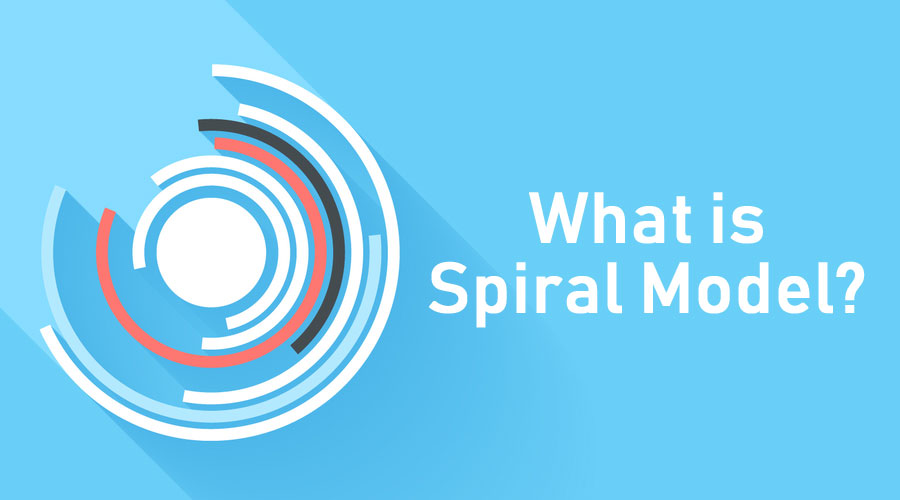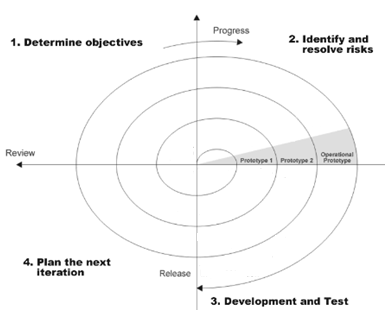Updated March 13, 2023

Introduction to the Spiral Model
The spiral model is one of the Software development life cycle model which is made by combining both iterative model and waterfall model, where product stats with the small set of requirements and go through the development of that small product to meet the specified requirements, used when there is need of more releases frequently. Based on additional requirements, additional functionality will be added to the product in every increasing spiral until the product is ready for the production phase.
Spiral Model is a combination of the waterfall model, incremental model, and prototype model.
- Nowadays, many Software industries are looking at a bigger picture. They are planning their every step. From lots of experience, they conclude at some point at the end. Wrapping those as an agenda for the next move.
- Previously business world is stable. In earlier days, changes to the technology are not much frequent. We have gone through some difficulties when the market changes rapidly. The waterfall model is one which is insufficient to overcome these difficulties.
- For work on real client-centric projects, we need a flexible way. And that is done by the Spiral Model. It is the best approach to solving our problem.
- Project stakeholders found that this approach is a very good fit for different domains and different project size.
What Is Spiral Model?
- Spiral is built upon two models, namely Waterfall Model and the iterative model. If you don’t know these models, I recommend you to look at those model first.
- The Spiral model first introduced by Barry Boehm in 1986. As we learn this model, it evolves accordingly.
- To explain briefly Spiral Model is a Model where after each phase, it gets tested, and errors or mistakes are done by us are get handled.
- It is the main part of the SDLC(Software Development Lifecycle Model). Spiral Model is divided into different phases. These phases are a small part of software development.
- At the end of each part, each phase is get tested. These phases do not have a fixed count. It varies from project to project.
- Each phase of the Spiral Model starts with design objectives and ends with a client review.
- So this approach develops a product in ways of incremental series. There are no. of task regions in which every phase get activated.
Each Phase of it is divided into four parts as below:
- Determine Objective
- Identify and resolve the risk
- Development and test
- Planning the next iteration
Also, Look at the below image for more understanding.
Spiral Model
Working with the Spiral Model
This is the risk-oriented incremental spiral model
- Determine objective( Identification ): This phase starts with collecting all the requirements, to begin with. As our product gets more evolved, this phase checks for system requirements. Here two types of requirements get gathered. One is BRS(Business requirement specification), and the other is SRS(System requirement specifications).
- Identify and resolve the risk factor: Identify the risk at an early stage. Solve the problem in this phase only. If risk pops up here, an Alternative solution gets discussed and implemented. Also, the prototype has been produced in this phase.
- Development and Test: This is the main phase of this model. The development of products and testing is done in this phase. Testing has also been done after software development.
- Next iteration planning: Here starts the next iteration.
Advantages and Disadvantages
Below are the advantages and disadvantages:
Advantages
Below are the advantages:
- It is a cyclic model. It works in a spiral shape, like a waterfall model, which is a linear one.
- It is a risk-driven model.
- They use prototyping
- This model is very flexible as compared to the waterfall model
- It needs documentation to maintain
- Large projects are getting handled in a strategic way.
- We have control of all the phases.
- As per the customer demand, we can change to get implemented.
- Software production may take less time than estimated.
- Minimized risk factor.
- End-user gets a chance to see the system early.
- It is iterative in nature.
Disadvantages
Below are the disadvantages:
- The most important disadvantages of the spiral model are it does not have any standard documentation to follow as a guide.
- There has no limit. It can go infinitely.
- It is not beneficial for small scale projects.
- It requires people who are experts in risk analysis.
- It is costly.
Why do we use the Spiral Model?
- In a big project, especially, we are thinking about the spiral model.
- It gives us space to get feedback directly from the customer.
- When a long term project is running, and commitment is not feasible due to changes made in economic priorities.
- We are using the spiral model because it is cost-effective. Development is getter faster as compared to the waterfall model. Also, features are getting added in a systematic way.
- And the main benefit of this Spiral model is risk management. This risk analysis phase saves us from complications in the future.
Conclusion:
It is concerned about risk management and awareness, which is a crucial part of any software development lifecycle. It gives the facility to involve the client in every iteration. This helps to overcome the drawbacks of the existing system. With this model, we can be more successful in getting customer satisfaction over time.
Recommended Articles
This has been a guide to What is Spiral Model?. Here we discussed the Required Skills, Advantages, and Disadvantages of the Spiral Model. You can also go through our other suggested articles to learn more –


